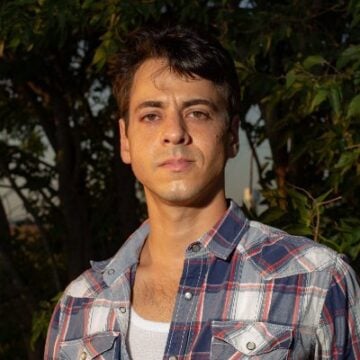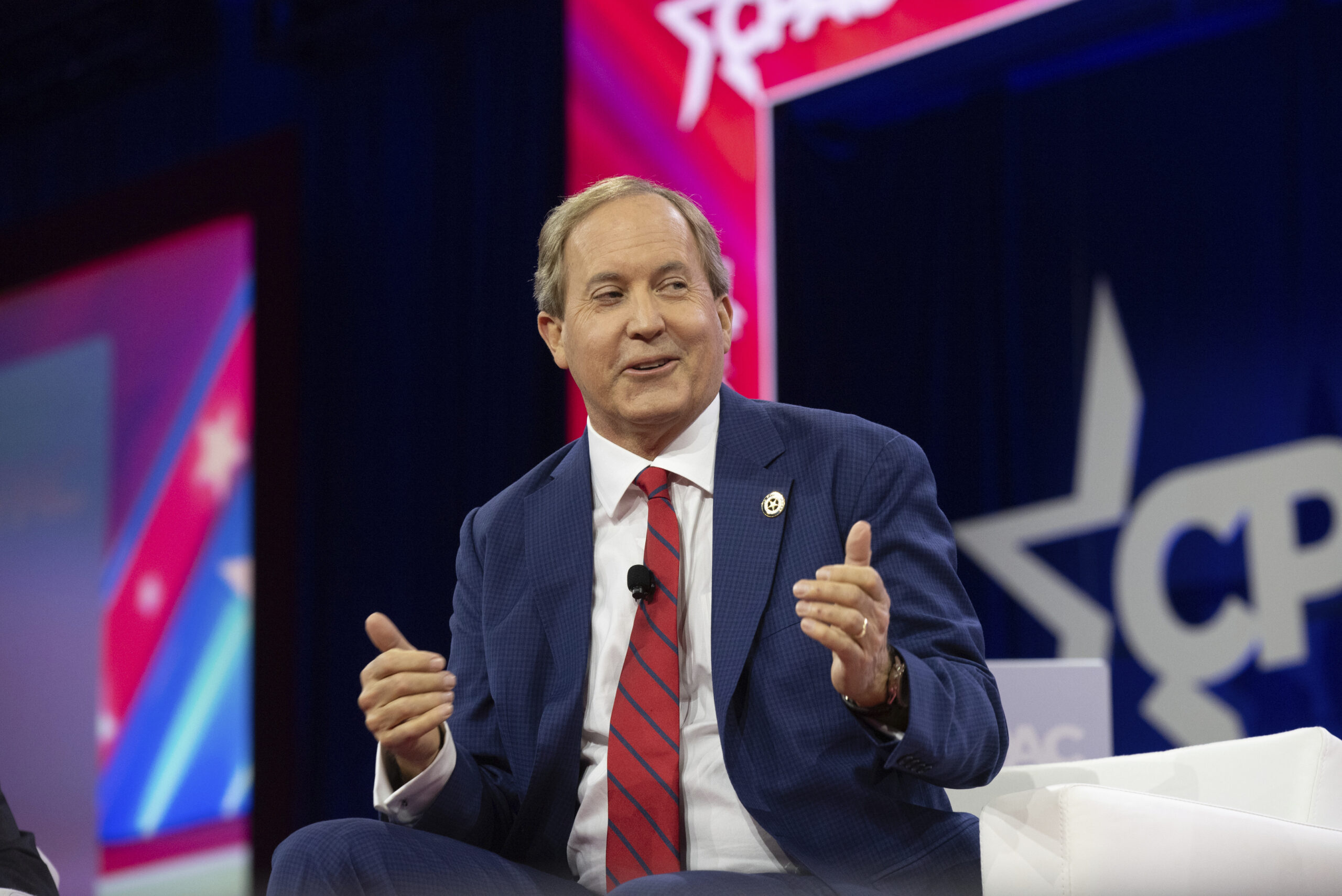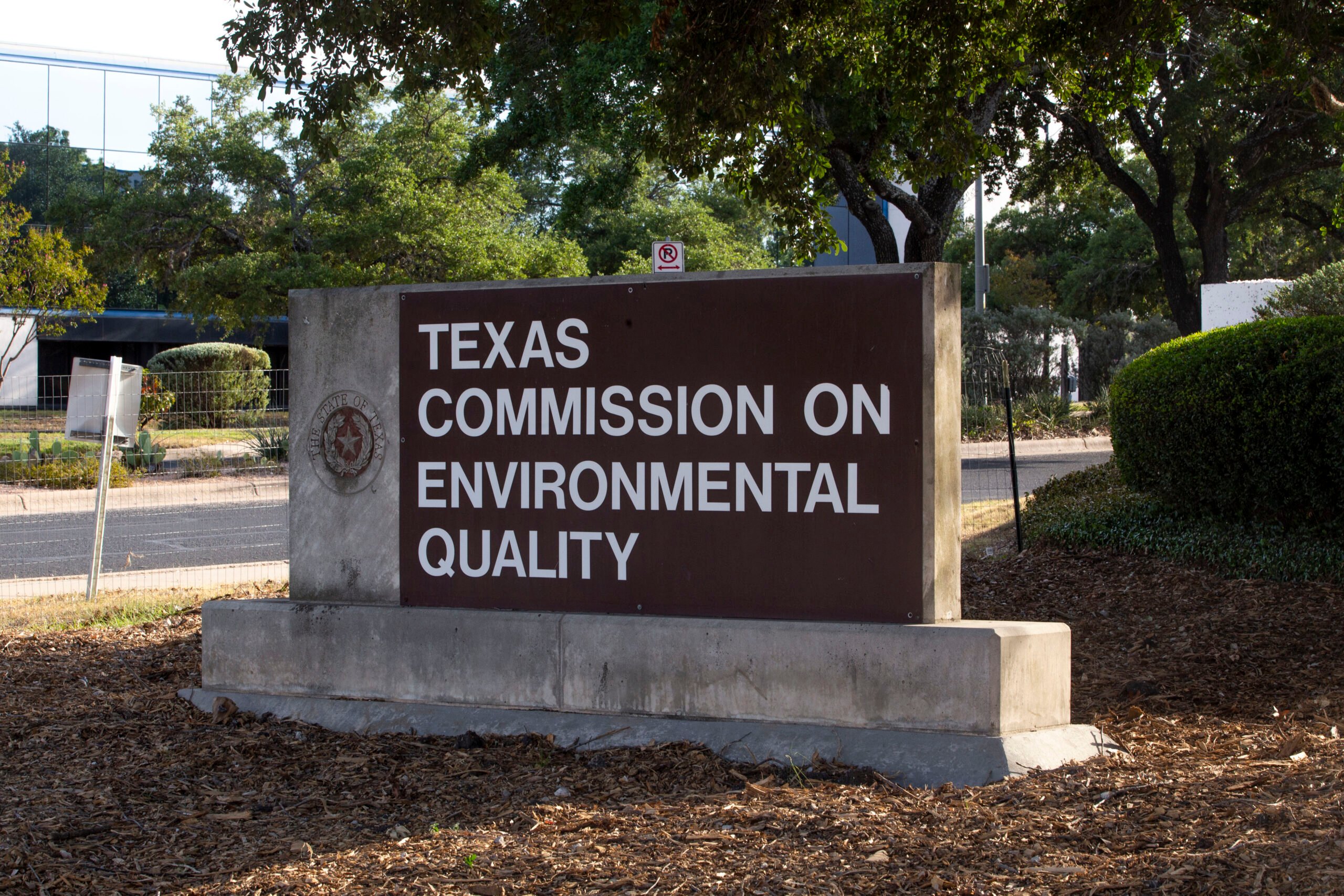
Court: Lone Star State Violated Emissions Limits on Gulf Coast
Judges argued that the Texas Commission on Environmental Quality illegally enabled Port Arthur LNG to avoid air pollution control requirements.

Above: John Beard Jr., the founder and executive director of the Port Arthur Community Action Network, stands in front of the ExxonMobil and QatarEnergy’s Golden Pass LNG facility, just south of Port Arthur, Texas.
This article originally appeared on Inside Climate News, a nonprofit, independent news organization that covers climate, energy and the environment. It is republished with permission. Sign up for their newsletter here.
A federal appeals court on Monday struck down a major air pollution permit issued by Texas’s environmental regulator, arguing that the state allowed improperly high emissions limits for Port Arthur LNG, a gas liquefaction and export terminal currently under construction on the Gulf Coast.
In a 17-page opinion, a three-judge panel at the Fifth Circuit Court of Appeals ruled that the Texas Commission on Environmental Quality “acted arbitrarily and capriciously under Texas law” when it “declined to impose certain emissions limits on a new natural gas facility.”
The judges remanded the permit for Port Arthur LNG back to the TCEQ for correction.
“I hope this goes out and sends a message to the rest of the companies that are looking at us and want to make us a sacrifice zone,” said John Beard, a retired refinery worker and community activist in Port Arthur who first challenged the permit. “We’re going to attack every single one of them and we’re going to take them down where we can.”
“I hope this … sends a message to the rest of the companies that are looking at us and want to make us a sacrifice zone.”
The court’s decision follows three years of arguments and appeals since Beard, a former industrial firefighter and founder of the Port Arthur Community Action Network, first challenged the proposed permit, which would have authorized the $13 billion facility to release 3,200 tons of carbon monoxide, 1,900 tons of nitrogen oxides, 7.7 million tons of carbon dioxide and more every year.
Beard, who was represented by the nonprofit law firm Lone Star Legal Aid, argued that lax emission limits allowed Port Arthur LNG and its parent company, Sempra Energy, to cut corners on pollution control technology.
In a statement on Wednesday, Sempra said it would continue construction on Port Arthur LNG while it reviewed its options.
“The issue in question is a narrow technical matter,” the company said. “The court did not mandate the adoption of any specific emission limit in its decision and also noted that the TCEQ is not obligated to abide by the nonbinding guidance when issuing or reviewing the permit.”
The TCEQ declined to comment.
The argument revolves around whether or not TCEQ required Port Arthur LNG to use the highest standard of pollution control technology in its facility. Federal law requires state environmental regulators to verify that major new pollution sources employ the “best available control technology” to reduce emissions. That assessment should include a review of pollution control systems “used or proposed for the same or similar applications.”
Lone Star Legal Aid commissioned its own technical review of the TCEQ’s proposed permit and found that another recently approved gas terminal in Texas, Rio Grande LNG, had laid out plans in its application to operate the same equipment with substantially less pollution than what Port Arthur LNG promised.
“That was basic analysis,” said Amy Dinn, attorney for Lone Star Legal Aid. “The TCEQ should have considered that themselves.”
Both companies had applied to install several General Electric Frame 7EA combustion turbines equipped with Dry-Low NOX combustors. Rio Grande LNG proposed to run each machine with emissions of nitrogen oxides at 5 parts per million and carbon monoxide at 15 parts per million. Port Arthur LNG proposed to run the same machines with 9 parts per million of nitrogen oxides and 25 parts per million of carbon monoxide.
“We made comments to the TCEQ about this situation and they were just ignored throughout the process,” Dinn said.
Her comments also asked why the facility was not required to employ Selective Catalytic Reduction technology, or SCR, like other nearby gas terminals had proposed.
In response, TCEQ executive director Toby Baker wrote that Port Arthur LNG, in its application, had “included an economic analysis purporting to demonstrate that certain control technologies (including SCR) while technically feasible, are too costly for the proposed project.”
When two state administrative law judges reviewed the draft permit in 2021, they disagreed with the TCEQ.
“It is undisputed that using SCR technology is technically feasible; Applicant contends
however, that it is not cost-effective,” the judges wrote. “The ALJs find that the preponderance of the evidence established that the use of SCR control technology for the refrigeration compression turbines is cost effective.”
The judges recommend the TCEQ lower emissions limits for the compression turbines to 5 parts per million for nitrogen oxides and 15 parts per million for carbon monoxide, consistent with Rio Grande LNG.
TCEQ’s Baker objected. Because Rio Grande LNG was yet to be constructed, he wrote in June 2022, its proposed emissions limits had not been “demonstrated in practice.”
“There is no way to verify whether Rio Grande LNG will be able to attain the 15 ppmvd CO emission limit,” Baker wrote.
Three months later, the commissioners voted to reject the recommendation and issue the permit as initially proposed.
Appealed and Overturned
Typically, state courts hear complaints about state-issued pollution permits. But Port Arthur LNG’s permit was elibile for review in federal court, Dinn said, thanks to the 1938 Natural Gas Act which put certain gas infrastructure under federal jurisdiction.
“Federal courts rarely get a chance to review a TCEQ permit,” said Ilhan Levin, associate director of the Environmental Integrity Project in Austin. “For Texas, this legal opinion is a clear message to stop bending over backwards to accommodate the whims of fossil fuel corporations.”
In its ruling, a three-judge panel at the Fifth Circuit Court of Appeals in New Orleans wrote that the TCEQ “declined to impose certain emissions limits on a new natural gas facility that it had recently imposed on another such facility. In doing so, it contravened its policy of adhering to previously imposed emissions limits, but it did not adequately explain why. It therefore acted arbitrarily and capriciously under Texas law.”
“Somebody has to fight for people to breathe clean air.”
For Beard, the ruling marked a major triumph. He started PACAN in 2017, after he retired from the nearby ExxonMobil refinery, to improve living conditions in Port Arthur, a small Gulf Coast city flanked by massive petrochemical plants.
Forty-three percent of Port Arthur residents are Black, more than three times the statewide average. Despite the abundance of multi-billion dollar industries, median household income is 37 percent less than Texas as a whole while its poverty rate is nearly double.
Much of the city is in the 95th percentile nationally for both the volume of toxic air pollution released and resulting cancer risk, according to the U.S. Environmental Protection Agency.
“We’re bombarded left and right and it’s unjust. Somebody has to fight for people to breathe clean air,” Beard said. “It’s a blessing to be impactful on this kind of scale.”



